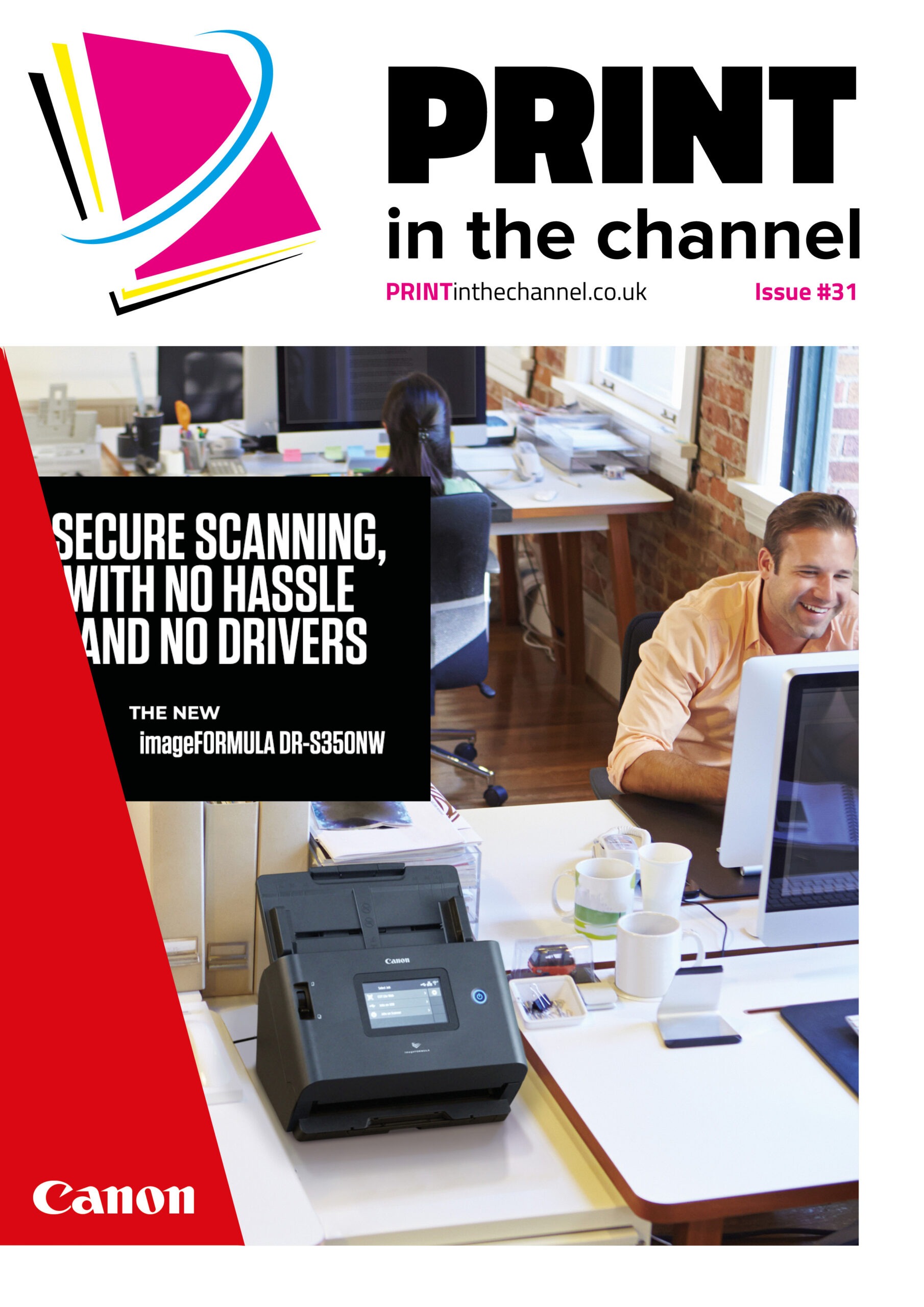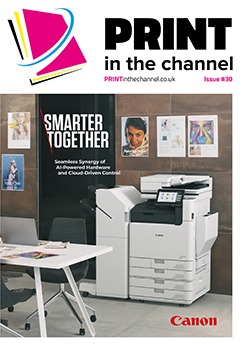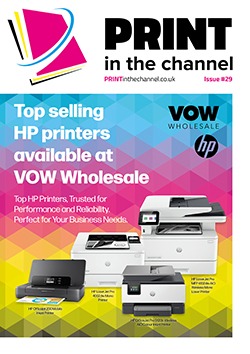Paper still plays a central role in many businesses’ daily operations, but their demands are changing, with a focus on sustainability and some wanting higher quality products – although cost is still often a big consideration.
While digitalisation continues apace for many businesses, it doesn’t mean that the role of the printer has become redundant – as the continuing launches of new print devices attests. Likewise, it means that demand for paper is also not significantly dropping.
“Despite the challenges faced by mass digitisation office papers remain a central and essential element of business communication,” says Paul Savill, product manager – office and digital papers at Antalis.
“The impact of receiving a personalised communication and the physical interaction it demands far outweighs that of an email that regularly arrives in your junk folder. Often that email’s destiny is nothing more than a one-click deletion.
“Office papers serve a comprehensive variety of roles and applications and as such its versatility and ability to serve the needs of the user are often maligned or indeed misunderstood.”
Michelle Lawton, account director – print at Exertis, agrees that print remains central to many businesses. “Print has reduced, but not as much as you would think, while archiving solutions and digital documents have grown people still have filing cabinets!” she says. “And in many industries moving to an automated way of working is just too large an expense in one go.”
Customer demands
While the demand for paper is still there, customer demands for what they want are changing. For instance, Paul says the advent of lower cost, high quality office colour printing has driven manufacturers to focus on developing their products to meet the needs of this technology. “They are producing office papers specifically designed with an ultra-smooth, high white finish, complimented by surface treatments to maximise the printers’ capabilities and colour reproduction,” he says.
“The result is a superior looking document and something you simply could not reproduce on the same paper you would use to print off an email or internal communication.”
Paul adds that buyers and consumers are becoming ever more demanding of the products they purchase. “This is in terms of quality and sustainability, and it is vital that any on pack claim, feature or environmental certification can be presented, discussed and debated if ever ‘put on the spot’ – an inability to be able to do this could quite literally result in a lost sale and loss of credibility,” he says.
“Here is where a reputable and knowledgeable supplier can help working in partnership with the reseller. They should be able to provide expertise, information, documentation, relevant training and detail to help support the reseller. This collaborative approach will enhance the skills and product knowledge of the resellers sales and customer service team.”
Changing habits
Michelle adds that paper has been looked on as a cheap product for many years, but this is changing as printing habits evolve. “Some customers are now looking for premium paper – with quality gsm, texture and finish – for when they print as documents are more often kept,” she says.
“Paper as a topic is massive with the different thicknesses, colours, sizes and finishes. Offices may use letterhead, continuation, plain and internal, which would usually be recycled paper as its not customer facing. All of which will be different weights, and all carry different price points.
“The only thing the different paper types have in common is that they are not cheap! Premium paper is like the good China – kept for best!”
But Steve Carter, managing director of Advantia Business Solutions, adds that while paper mills would love there to be large increases in demand for A- and B-grade paper, it isn’t there currently.
“At the minute, the paper mills are making a lot of white box paper because they’ve got a lot of capacity, as the demand for A and B grades just isn’t there,” he says. “Our dealers who buy paper by the container load are still buying plenty of paper but it’s C-grade paper.”
Paper pricing
But with the amount of white box paper being produced, it does mean that paper prices have returned to normal, having increased about two years ago due to strikes at some of the European paper mills creating a shortage, Steve notes.
“Once that paper shortage cleared up, you started to see prices coming back down again,” he adds. “And that’s what they did through the course of last year and they’ve levelled out now. There’s no urge from the mills to put it back up. The paper merchants would like to see it go back up, but as the mills are all abroad, they haven’t got the increases coming through on minimum wage and NI in April, which the merchants here have. However, increases in paper prices are always mill-driven.”
Steve adds that, having spoken to paper merchants, there is no sign of an increase in price on the horizon. “What tends to happen is one of the mills will dip their toe in the water and talk about increases, and then they’ll wait to see whether anyone else follows. If other mills do, then they’ll put an increase through. But if they don’t, then they won’t go out on a limb and do it themselves.
“At the minute, there’s no indication of any price increases coming through. Prices have plateaued and I think they will probably stay plateaued for a while before you start to see some increases come through. But things can change, as we know from recent years.”
Cost considerations
Steve says that cost is still an important consideration when discussing paper with customers. “If the first question the customer asks is, ‘what’s the price of your paper?’ Then you know that it’s going to be all price-driven,” he says. “Resellers have got to try and get them away from that and start talking to them about overall service. But you still get dealers, and probably more so the contract stationers, that will either sell paper at cost or below and then make it up on other products because they know to win that business, the paper pricing must be extremely keen.
“In some instances, it’s still that loss leader, but even if you’re making money on paper, you’re not making a lot.”
Michelle agrees on the importance of cost. “Cost is always at the forefront and now more so than ever, its particularly important in high use areas – for example education, printing services and transactional data, which is why all our bills are online,” she says.
“There is still high demand for cheap paper, but the deciding factors are the industry and type of document to be produced i.e. letters, flyers, menus, booklets or posters. For example, in education they often use different colours to aid reading for the pupils that can often be upwards of double the white paper print costs.”
Sustainability concerns
While cost is important, so are issues such as sustainability. Dr Liz Wilks, head of sustainability and public relations at APP, notes that sourcing from well-managed forests has been a key part of the purchasing decision for the last 30 years since the two global forest certifications were put in place, notably FSC & PEFC.
“Paper is one of the most sustainable raw materials from source to end of life – it can be recycled up to seven times,” she says. “Of course, there are different considerations in sourcing paper i.e. virgin fibre with a forest certification or recycled paper. APP also goes beyond this being deforestation free since 2013.
“Sustainability is a core consideration at APP, and we recognise the importance of sourcing materials from sustainably managed forests, such as those certified by the PEFC. We also work closely with our suppliers to ensure they follow environmentally responsible practices. By integrating sustainability into our process, we aim to minimise our environmental footprint, support responsible forestry practices, and provide our customers with high-quality, eco-friendly paper products.”
Liz says that resellers should keep emphasising the environmental qualities of using paper and explaining the labels that reflect this such as PEFC. “The consumption of paper is in fact sustainable,” she says.
Michelle agrees that sustainability is an important consideration. “Customers have to use paper so the buying scales are weighted against cost and sustainability as the companies themselves often have green credentials to meet,” she says. “Printer manufacturers and software solution providers all now look at sustainability with some planting trees to offset the paper their customers use in the industry and helping businesses feel better about buying decisions and using paper through their devices.
“People want sustainable low-cost paper with a reasonable finish that could go inside or outside the company to the public. The trend will be on sustainable devices and paper suppliers and using software to report on print usage and spend with possible limits. Inaccurate printing is no longer considered disposable and the recycle waste paper containers should be empty as that’s an expense to the business.”
Trends
There are other expected trends in paper purchasing over the coming 12-18 months. “As CEPIs statistics report in 2024 highlights, paper packaging grades are growing, which is no surprise, however, graphic paper is too as people do like to have good quality brochures and books,” says Liz. “The focus on recycling also helps to support the sustainable facets of paper.”
Liz adds that copier paper is also set to increase as demand for office printing remains, according to Future Markets Insights. “However, paper supply could be disrupted in 2025 due to the geopolitical situation,” she warns.
“In terms of sustainability, the paper industry remains firm with additional expectations from Europe under the green deal, which this particular sector is ready to take on given its history of certification and traceability under chain of custody.”
Reseller conversations
When talking about paper to customers, then resellers should look to understand the business’ needs, says Paul. “A printed office document and the impact on its intended recipient rely more and more on the paper it is printed on and whilst there will always be a need/market for cost effective papers, the skill of the reseller lies within understanding the customers’ application as well as understanding their needs, wants and desires,” he says.
“In addition, the reseller would be well served to fully to understand the product they are promoting in detail – and then tailor their proposal to meet the customers need.”
Michelle agrees: “The reality is the paper is only half the story, and the media type, size, thickness, colour and end design are other deciding factors as is what print type laser or ink jet and finishing it will have,” she notes.
“You need to understand the customers documents to be able to advise savings and the customer needs to understand the cost to the business.”










